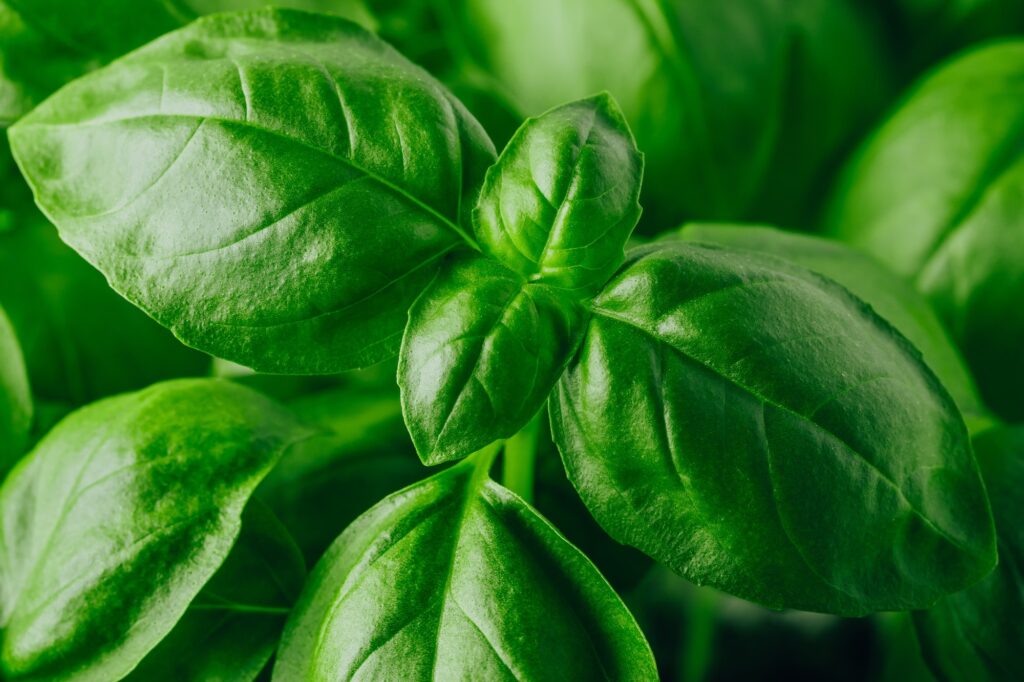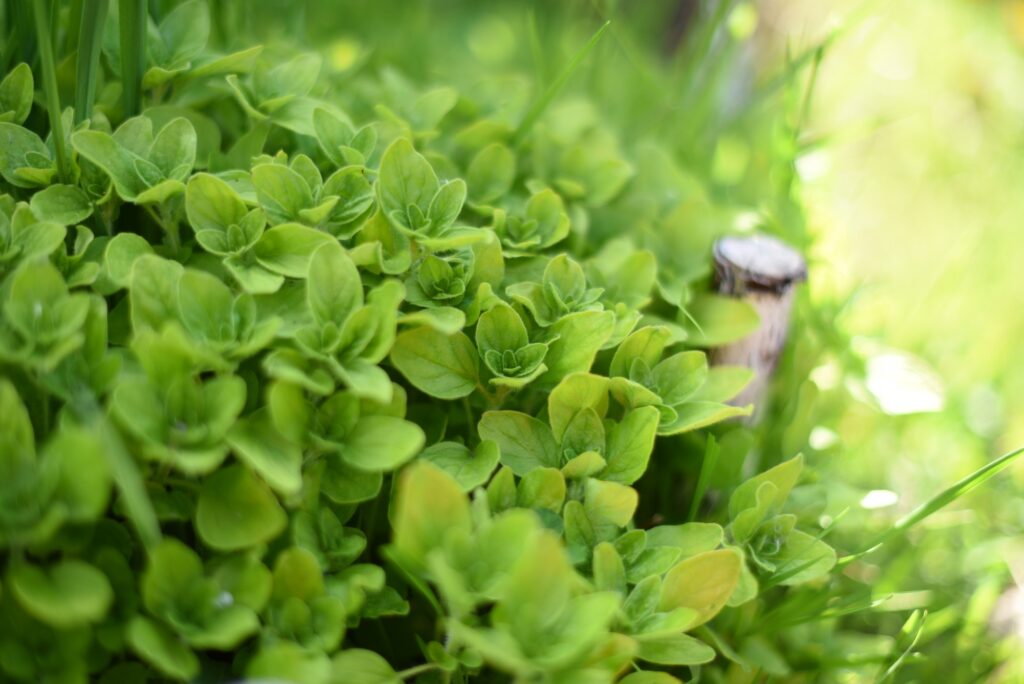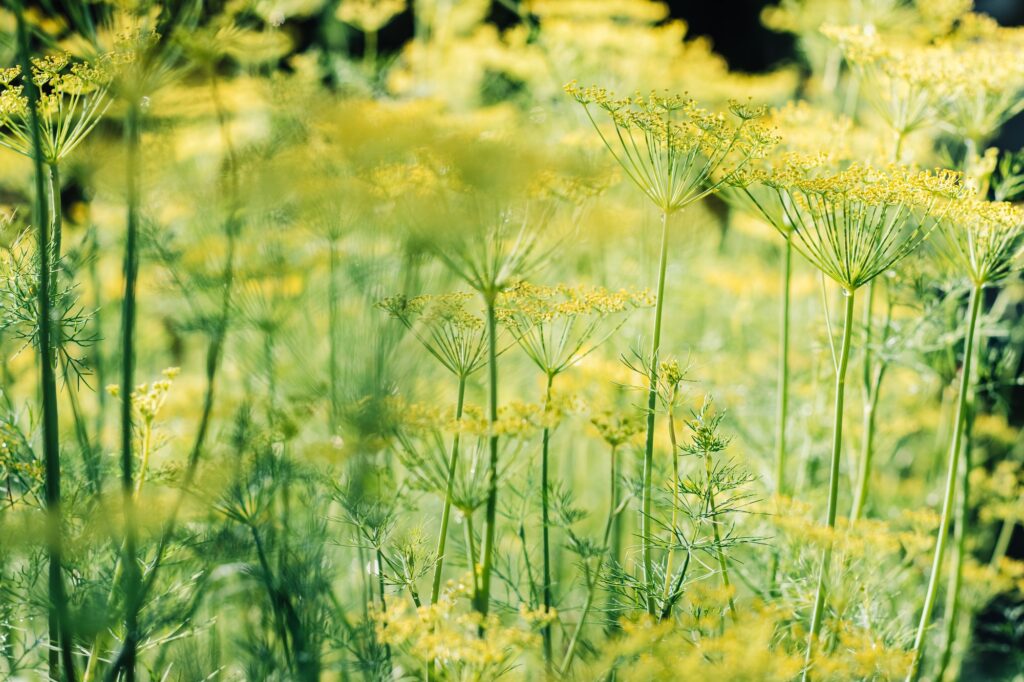Introduction
When planning an herb garden, mint is a popular choice due to its versatility in both sweet and savory dishes and drinks. However, mint can also be invasive and spread quickly, making companion planting an important consideration. Choosing the right herbs to plant alongside mint can create a thriving and self-sufficient garden.
This article will explore 4 herbs that make excellent companions for mint:
- Basil
- Oregano
- Cilantro
- Dill
For each herb, we will cover its flavor profile, ideal growing conditions, and benefits of planting it with mint. We’ll also discuss best practices for container gardening to keep mint under control. Read on to learn how to create a harmonious and bountiful herb garden with mint!
Basil

Known as the king of herbs, basil has a sweet, peppery flavor that shines in Italian dishes. Its aroma blends nicely with mint, making these two herbs perfect partners.
Growing Conditions
- Full sun
- Moist, well-drained soil
- Grows as an annual in most climates
Pairs Well With Mint Because
- Enjoy similar soil moisture preferences
- Mint helps repel pests like aphids that can plague basil
- Flavors complement each other nicely
Oregano

Oregano offers a bold, aromatic flavor with notes of citrus and pepper. It grows well with mint as their growth habits and preferences are quite similar.
Growing Conditions
- Full sun to light shade
- Well-drained soil
- Hardy perennial
Pairs Well With Mint Because
- Both require consistent moisture
- Oregano isn’t prone to mint’s aggressive spreading
- Natural pest deterrents help protect both herbs
Cilantro

Cilantro provides a fresh, citrusy flavor. Its quick-growing nature makes it a great short-term companion for mint before replacing with another crop.
Growing Conditions
- Full sun
- Moist, well-drained soil
- Grown as an annual
Pairs Well With Mint Because
- Enjoy similar moisture levels
- Helps mask strong mint fragrance
- Frequently used together in recipes
Dill

Dill has a clean, grassy flavor that enhances seafood, salads, and more. As a re-seeding annual, it can reappear each year with mint.
Growing Conditions
- Full sun
- Well-drained soil
- Re-seeding annual
Pairs Well With Mint Because
- Natural pest deterrent
- Can handle mint’s spreading habit
- Commonly used together in recipes
Best Practices for Growing Mint
While the herbs covered make excellent companions for mint, its aggressive spreading habit still warrants caution. Here are some best practices for keeping mint under control:
- Plant mint in containers above ground or buried in garden beds
- Choose deep containers, at least 12-16 inches deep
- Use commercial potting mix not garden soil
- Divide mint plants every 2-3 years to rejuvenate
- Harvest often to prevent flowering and self-seeding
Following these simple guidelines will allow you to reap the benefits of companion planting mint without it taking over your herb garden!
Conclusion
Creating a thriving herb garden starts with choosing the right plants to grow side-by-side. Mint’s aromatic qualities and growing habits make basil, oregano, cilantro, and dill excellent companion options.
Paying attention to each herb’s specific needs and properly containing mint will lead to a bountiful harvest. Employing the best practices outlined above allows the flavors and pest-deterring traits of these herbs to really shine through.
With some thoughtful planning, you can craft a harmonized and low-maintenance herb garden with mint. Just be sure to enjoy the bounty these companion plants have to offer in your favorite recipes!

